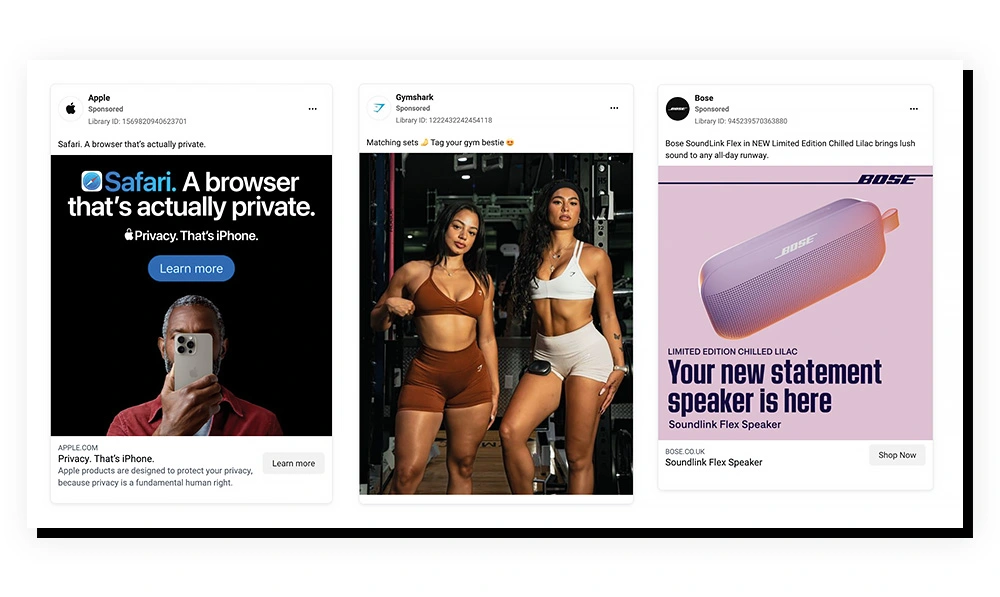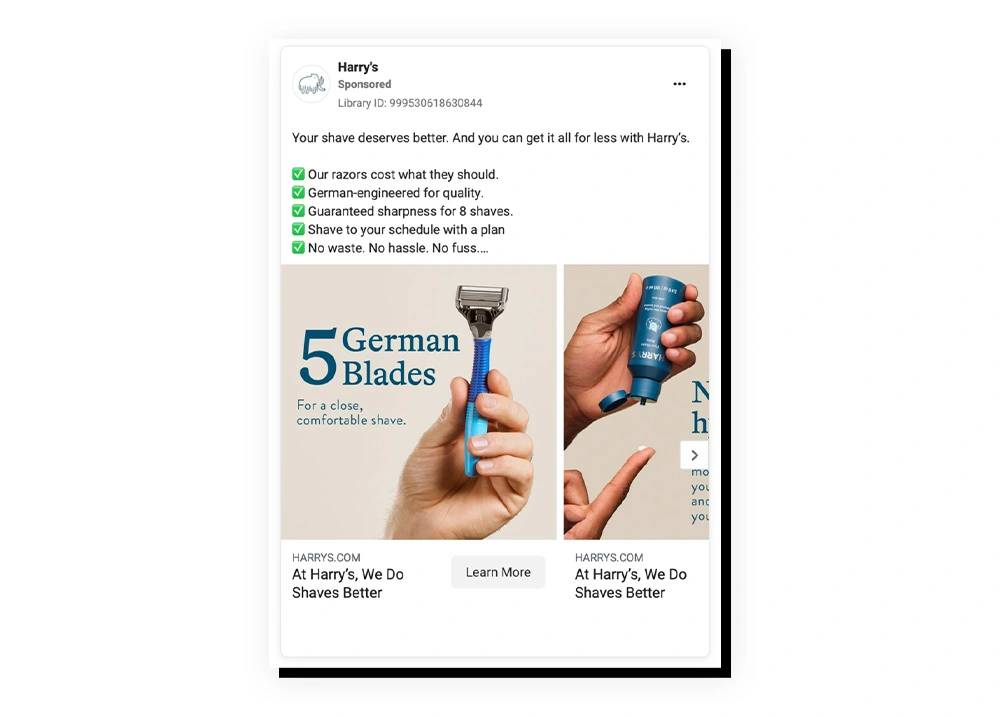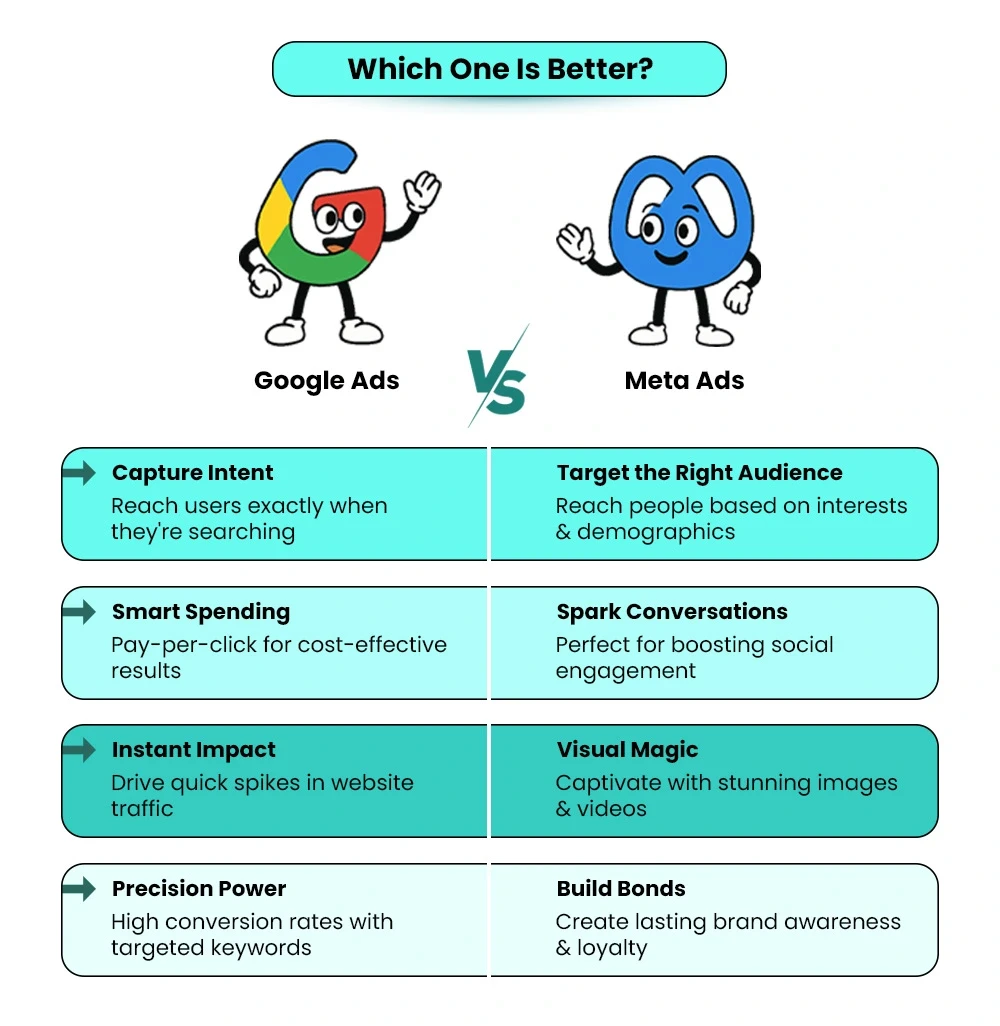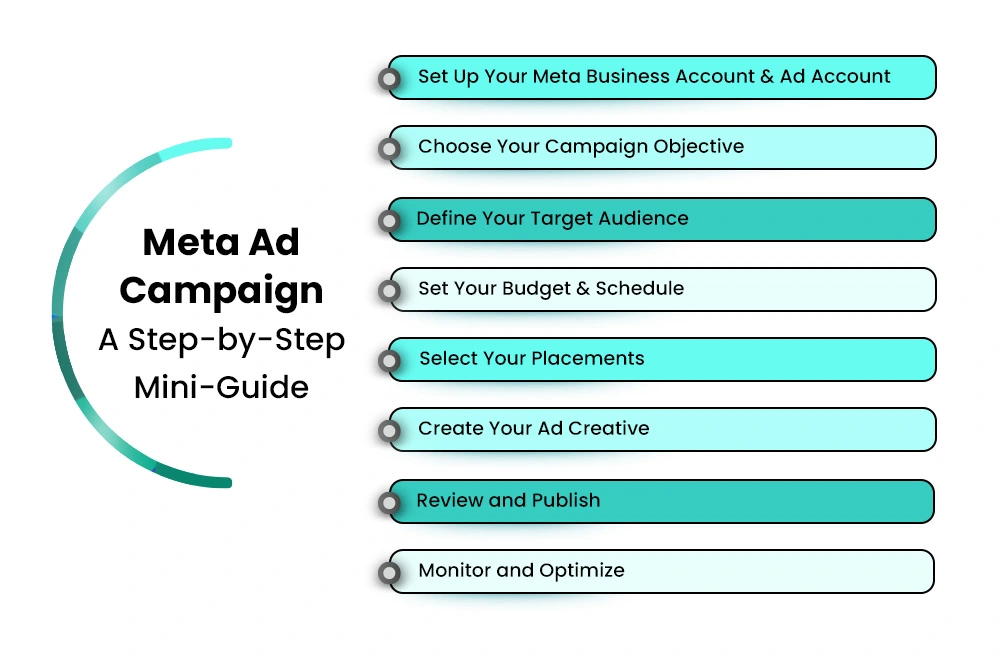What Are Meta Ads? A Beginner’s Guide to Facebook & Instagram Advertising
Struggling to reach new customers or make sense of online marketing? You’re not alone. Many businesses find themselves overwhelmed by countless platforms and strategies, unsure of where to start. That’s where Meta Ads come in.
So, what are Meta ads? Simply put, they’re the paid advertising tools behind Facebook and Instagram, two of the most powerful social media platforms available to businesses today.
As of January 2025, Facebook ads alone reached 2.28 billion users, accounting for approximately 41.1% of the world’s internet users. This immense reach offers businesses a cost-effective way to target the right audience, boost brand awareness, and drive real results.
Whether you’re a small business owner or a growing brand, Meta Ads offer a cost-effective way to target the right audience, boost brand awareness, and drive real results. With billions of active users scrolling every day, your next customer is likely just one scroll away.
In this guide, we’ll break down how Meta Ads work, set up your first campaign, and share proven tips to get the most out of your budget. If you’ve been looking for a smarter way to advertise online, keep reading; your next marketing breakthrough could be just a few clicks away.
What Are Meta Ads Exactly?
Meta Ads—formerly known as Facebook Ads—are a powerful way to connect with potential customers on Facebook and Instagram. With billions of users on these platforms, Meta Ads help you reach the right audience based on:
- Demographics
- Interests
- Online behaviors
That means your ads show up where they matter most, right in front of people who are most likely to engage. Meta Ads offer a variety of flexible formats to make your brand stand out, including:
- Image ads
- Video ads
- Carousel ads
You can also enhance your campaigns with features like interactive maps and Meta Pixel tracking for better engagement and performance insights. What sets Meta Ads apart is the personalization.
Instead of criticizing generic content, you create targeted experiences that feel relevant to each user. If you’re aiming to grow your business online with smart, strategic advertising, Meta Ads are a great place to start.
Types of Meta Ads
Meta advertising offers several ad formats, and choosing the right one depends on your campaign goals and target audience. Your visuals should always align with who you’re speaking to.
For example, display ads work great for showcasing multiple products, but only if they’re relevant to the audience you’re targeting. Here are some of the types of Meta ads:
a) Image Ads
Image ads are one of the simplest yet most effective Meta advertisement formats. With a single, eye-catching image, whether it’s a polished product shot, user-generated content, or a custom visual, you can quickly tell your brand’s story.
The key? Keep text minimal and your message clear. Image ads work best when you want something that grabs attention fast, drives traffic, or builds brand awareness.

b) Video Ads
Video ads are perfect for telling stories, showing your product in action, or offering quick how-tos. They create a more immersive experience than a single image and keep users engaged longer.
A Databox study found that 67.55% of people say video content drives more ad clicks on Facebook. If you want to boost engagement and connect on a deeper level, video creatives are a smart move for your next ad campaign.
– Also Read- How Meta’s AI-Driven Video Content Tools Are Transforming Marketing
c) Carousel Ads
Carousel ads are a fun and interactive format in digital advertising that lets you showcase multiple images or cards within a single ad. They encourage users to swipe through, making it easy to tell a story, highlight features, or display several products.
The trick? Make the content flow smoothly—generic slides can lose interest fast. When done right, carousel ads keep viewers curious and engaged, driving traffic and boosting conversions just like single-image ads, but with even more room to shine.

d) Collection Ads
Collection ads are a powerful format in online advertising, especially for eCommerce brands. Like carousels, they let users swipe through multiple images but with a more dynamic twist.
These ads usually feature a main video or image with three product thumbnails in a grid. When tapped, users open a fast, immersive Instant Experience without leaving the Meta platform—perfect for showcasing products and boosting engagement in a seamless, mobile-friendly way.
e) Retargeting Ads
A major win in social media ad campaigns is the power to retarget users, yet many businesses miss out on it. Ever browsed a product online and then seen it pop up on Facebook or Instagram later? That’s retargeting in action. It’s a smart way to reconnect with visitors who didn’t convert the first time and gently guide them back to your offer when they’re more likely to act.
How Do Meta Ads Work?
Running ads on Meta platforms like Facebook and Instagram might seem overwhelming at first, but once you understand the campaign structure, it becomes much more manageable. At the heart of it all is the Meta Ads Manager—your go-to ads platform for planning, creating, and tracking ad campaigns.
Think of it as your command center for all things advertising across the Meta advertising platform. Here’s a breakdown of how the structure works:
1. Campaign Level
This is where everything starts. At the campaign level, you choose your objective, what you want your ad to achieve. Meta offers a range of objectives to align with your business goals:
- Awareness– Boost brand recognition and reach new people.
- Traffic– Drive clicks to your website, landing page, or app.
- Engagement– Increase post likes, shares, comments, or page follows.
- Leads– Collect lead data via forms, calls, or sign-ups.
- Sales– Promote products and encourage purchases.
- App Promotion– Get more app installs or interactions.
Choosing the right objective helps Meta optimize your ads performance from the very beginning.
2. Ad Set Level
This is where you fine-tune the delivery of your campaign. It includes:
Budget & Schedule
- Daily Budget– Spend a set amount each day.
- Lifetime Budget– Set a max amount for the campaign duration.
- Set start and end dates to control when your ads run.
Audience Targeting
- Use detailed targeting based on location, age, gender, interests, behaviors, and more.
- Create custom audiences from your website visitors or email list.
Placements
- Automatic Placements– Let Meta choose the best spots for your ads across platforms.
- Manual Placements– Choose exactly where your ads show up: Facebook Feed, Instagram Feed, Stories, Reels, Audience Network, and more.
Optimization & Delivery
Meta uses machine learning to deliver your ads to the right people at the right time based on your campaign objective.
3. Ad Level
This is where the magic happens, the actual ad creative. You’ll define:
- Creative Elements– Upload images or videos, write your headline, and primary text.
- Call to Action (CTA)– Examples include: “Shop Now”, “Learn More”, “Sign Up”
- Destination– Choose where users go after clicking: your website, Messenger, or app.
Bonus Tip: A/B Testing:
Don’t rely on guesswork. A/B testing lets you compare different versions of your ad, like changing the image, text, or audience, to see what performs best. Testing is key to improving your ad performance and making smarter decisions on the Meta advertising platform.
Understanding how to structure your campaign on Meta platforms sets the foundation for successful advertising. Once you get the hang of it, you’ll be ready to launch and optimize campaigns that truly drive results.
Why Should Your Business Use Meta Ads?
If you’re serious about growing your business online, social media advertising through Meta Ads should be high on your priority list. Whether you’re a local shop or a global digital advertiser, the Meta advertising platform offers powerful tools to help you connect with the right people and get real results.
1. Unmatched Reach
With over 3 billion active users across Facebook and Instagram, Meta gives your business access to one of the largest audiences in the world. Whether your goal is brand awareness or lead generation, the potential to reach your target audience is massive.
2. Precise Audience Targeting
One of the biggest advantages of Meta Ads is how laser-focused you can get with your targeting:
- Demographics– Narrow down by age, gender, location, and language.
- Interests– Reach users based on hobbies, liked pages, or niche interests.
- Behaviors– Targeted by online behavior, like purchase habits or device use.
- Custom Audiences– Reconnect with people who visited your website or signed up for your email list.
- Lookalike Audiences– Find new people who share traits with your existing customers.
This level of precision ensures your message hits the people most likely to take action.
3. Cost-Effectiveness & ROI
Even with a modest budget, you can run effective campaigns. Meta Ads are scalable, making it easy to start small and grow based on performance. Plus, you can track every dollar and see how it impacts your bottom line, making it easier to manage budgets and prove ROI.
4. Measurable Results
With Meta Ads Manager, you can measure results in real time. From impressions and clicks to conversions and sales, you get detailed insights that help you understand what’s working—and what’s not.
5. Brand Building & Awareness
Beyond conversions, Meta Ads are fantastic for boosting your brand’s visibility. Consistent and creative campaigns help your business stay top-of-mind with potential customers.
6. Driving Sales & Leads
And yes, Meta Ads aren’t just about likes and follows. They’re built to drive real business outcomes, whether that’s product sales, app installs, or collecting high-quality leads.
If you’re not using Meta Ads yet, you’re missing out on one of the most effective tools in digital advertising today.
Meta Ads vs. Google Ads: A Quick Comparison

When it comes to online advertising, two giants dominate the space: Meta Ads (Facebook & Instagram) and Google Ads. While both are powerful tools, they serve different purposes and reach users at different stages of the buying journey.
Think of Meta Ads as awareness-based; they help you reach people who may not even know they need your product yet. These ads appear while users scroll through their feeds, making them ideal for visually engaging content that sparks curiosity or emotional connection.
With a variety of formats like videos, carousels, and collection ads, Meta is perfect for storytelling and showcasing your brand in action.
On the other hand, Google Ads are intent-based. People use Google to search with a purpose, whether they’re looking for a product, a service, or a solution.
These text-based ads appear when someone is actively seeking what you offer, making them great for driving high-converting traffic. So, when should you use which?
- Use Meta Ads for beginners looking to build brand awareness, grow a social presence, or retarget website visitors.
- Use Google Ads when you want to capture users with high purchase intent.
- Better yet, combine both platforms for a full-funnel strategy to reach cold audiences based on interests on Meta and convert warm leads through Google search.
By understanding the strengths of each platform, you can create campaigns that meet your audience where they are and guide them toward action.
– Also Read- Meta Ads and Google Ads: How They Work Together in Cross-Platform Strategies?
Getting Started with Your First Meta Ad Campaign: A Step-by-Step Mini-Guide

Step 1: Set Up Your Meta Business Account & Ad Account
Ready to launch your first campaign? Start by setting up your Meta Business Account and Ad Account through the Meta Business Suite. This is your control center for managing ad campaigns, tracking performance, and monitoring user interactions.
As a beginner’s guide to Meta Ads, this step is essential; it ensures you have the right tools to organize assets, assign roles, and access insights that drive better results.
Step 2: Choose Your Campaign Objective
The next step in setting up your first campaign with Meta for Business is choosing your campaign objective. Are you looking to boost brand awareness, drive traffic, generate leads, or increase sales?
Your objective guides how your ads are optimized and who sees them. Pick the one that aligns with your business goals so you can target specific audiences effectively and get the most out of your ad spend.
Step 3: Define Your Target Audience
Now it’s time to define who you want to reach. One of the biggest advantages of advertising on Meta is the ability to zero in on specific audiences based on demographics, interests, behaviors, and more.
Spend time researching your ideal customer; this step is key to making sure your ads reach the right people. The better you understand your audience, the more effective and engaging your campaign will be.
Step 4: Set Your Budget & Schedule
When setting up your campaign, you’ll need to decide on a budget and schedule. Whether you choose a daily or lifetime budget, this step helps control your ad spend while ensuring your message reaches specific groups at the right time. Understanding what are Meta ads mean, knowing how flexible they are, you can start small and scale up as you learn what works best for your goals and audience.
Step 5: Select Your Placements
Next, choose where your ads will appear. For beginners, automatic placements are a great start; they let Meta decide the best spots across Facebook advertising and Instagram advertising to get results.
If you’re more advanced, manual placements allow you to control where your ads show up, like in Stories, Reels, or Feeds. The goal is to engage users where they’re most active and likely to take action, so placement matters more than you might think.
Step 6: Create Your Ad Creative
Now for the fun part: creating your ad! Use high-quality, relevant visuals that stand out, whether it’s a photo or video. Keep your ad copy clear, concise, and focused on the benefits your audience cares about.
Don’t forget a strong call to action like “Shop Now” or “Learn More.” This step is key in any Facebook ads guide or Instagram ads tutorial, as it directly impacts clicks, conversions, and overall ad success.
Step 7: Review and Publish
Before you hit “Publish,” take a moment to double-check everything—from your campaign objective and audience targeting to your ad creative and budget. A quick review can help avoid common mistakes and ensure your campaign is set up for success.
Once everything looks good, go ahead and launch your ad. It’s an exciting step in your journey with Meta Ads. Now, you’re ready to reach your audience and start seeing real results!
Step 8: Monitor and Optimize
Launching your ad is just the beginning! To get the most out of your Meta Ad campaign, keep an eye on key metrics like reach, clicks, and conversions. Use Ads Manager to track performance and identify what’s working—or what needs tweaking.
Small adjustments to your creative, audience, or budget can make a big difference. Ongoing monitoring and optimization help ensure your ads stay effective and continue driving meaningful results.
– Also Read- The End of Detailed Targeting Exclusions and What It Means for You
Best Practices for Running Effective Meta Ads
Here are some of the best practices for running effective Meta Ads for your business.
1. Clear CTA (Call-to-Action)
A strong CTA is what turns a good ad into a high-performing one. Whether it’s “Shop Now,” “Learn More,” or “Sign Up,” your call-to-action should tell your audience exactly what to do next. Keep it short, direct, and aligned with your campaign goal.
Make sure it stands out visually and is supported by your ad copy and creative. Think of your CTA as the handshake at the end of a great conversation—it seals the deal and guides users to take the next step.
2. Strong Visuals and Mobile-First Design
Most Meta users scroll on their phones, so your ads should be optimized for mobile first. Use high-quality visuals that grab attention instantly, whether that’s a bold image, a snappy video, or an eye-catching animation.
Make sure text is minimal and readable, even on smaller screens. Vertical formats (like 4:5 or 9:16) perform better on mobile feeds and Stories. Remember, your ad has seconds to stop the scroll, so design with mobile in mind to increase impact and engagement.
3. A/B Testing Creatives and Copy
Don’t rely on guesswork—test it! A/B testing lets you compare different versions of your ad to see which one performs best. Try switching up your headlines, visuals, CTAs, or even audience segments.
Start with small changes so you can see what’s driving results. Meta’s Ads Manager makes it easy to set up tests and track performance. This ongoing experimentation helps you learn what resonates most with your audience and improve your ad performance over time.
4. Monitor Key Metrics (CTR, ROAS, CPM)
Running ads without tracking metrics is like driving blind. Keep a close eye on important data points like CTR (Click-Through Rate), ROAS (Return on Ad Spend), and CPM (Cost Per Thousand Impressions). These metrics help you understand what’s working and where adjustments are needed.
For instance, a low CTR might mean your creative isn’t engaging, while poor ROAS could point to targeting issues. Monitoring your metrics regularly helps you fine-tune your campaigns and maximize your budget.
5. Retargeting Warm Audiences
Retargeting is one of the most powerful features of Meta Ads. It allows you to re-engage people who’ve already interacted with your business, like visiting your website, watching a video, or adding something to their cart.
These “warm” audiences are more likely to convert, so tailor your message to move them down the funnel. Use reminders, special offers, or product highlights to bring them back. It’s an easy win that boosts ROI and helps you close the loop on missed opportunities.
– Also Read- Check out Instagram’s New Metric “Views” for Creators
Conclusion
So, what are Meta ads? Simply put, they’re a powerful way to connect with your audience across Facebook and Instagram through targeted, visual, and engaging campaigns. Whether you’re just starting or looking to fine-tune your strategy, understanding how Meta’s ad system and Meta algorithm work can give you a serious edge.
From setting up your first campaign to optimizing performance, each step matters. The key is staying consistent, testing what works, and letting the data guide you. With the right approach, Meta ads can help you build brand awareness, drive traffic, and grow your business organically and through paid strategies.
Ready to get started? Your audience is already scrolling—make sure they see you. Reach out to us at Mastroke for better Meta Ads campaign planning.
FAQs-
1. What’s the difference between boosting a post and creating an ad?
Boosting a post is a quick way to promote existing content. It offers limited targeting options. Creating an ad through Ads Manager gives you more control—better targeting, creative formats, and objectives. For serious results, creating an ad is the better choice.
2. How much should I spend on Meta Ads as a beginner?
Start small, around $5–$10 per day. Focus on testing different creatives and audiences. Watch your results closely. Once you know what’s working, you can slowly increase your budget. Even small budgets can deliver great returns with the right strategy.
3. Can I run ads on both Facebook and Instagram at the same time?
Yes, absolutely. Meta Ads Manager allows you to place ads across Facebook and Instagram in one campaign. You can use automatic placements or choose specific ones. It’s an easy way to maximize your reach and engagement across both platforms.
4. How do I know if my Meta Ads are successful?
Track your key metrics in Meta Ads Manager. Look at reach, click-through rate (CTR), conversions, and return on ad spend (ROAS). These numbers show how well your ads are performing. Use them to adjust and improve your campaigns.
5. What’s the difference between Facebook Ads and Meta Ads?
Facebook Ads are now part of Meta Ads. Meta Ads cover all platforms owned by Meta—Facebook, Instagram, Messenger, and Audience Network. It’s one system, managed in Ads Manager, giving you more reach and targeting power across multiple channels.
